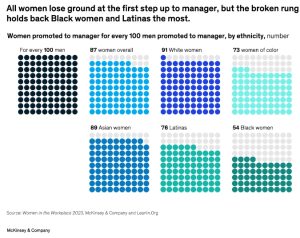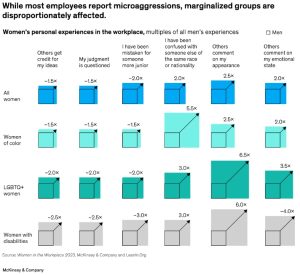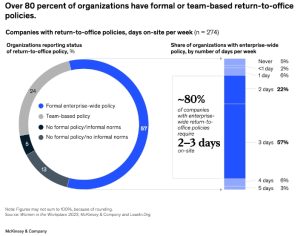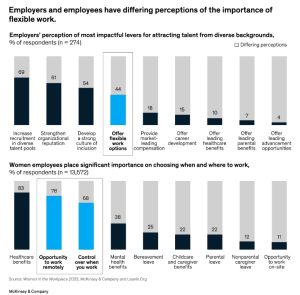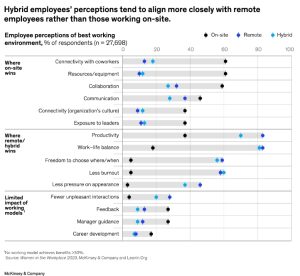This year’s research reveals some hard-fought gains at the top, with women’s representation in the C-suite at the highest it has ever been. However, with lagging progress in the middle of the pipeline—and a persistent underrepresentation of women of color1—true parity remains painfully out of reach.
The survey debunks four myths about women’s workplace experiences and career advancement. A few of these myths cover old ground, but given the notable lack of progress, they warrant repeating. These include women’s career ambitions, the greatest barrier to their ascent to senior leadership, the effect and extent of microaggressions in the workplace, and women’s appetite for flexible work. We hope highlighting these myths will help companies find a path forward that casts aside outdated thinking once and for all and accelerates progress for women.
The rest of this article summarizes the main findings from the Women in the Workplace 2023 report and provides clear solutions that organizations can implement to make meaningful progress toward gender equality.
State of the pipeline
Over the past nine years, women—and especially women of color—have remained underrepresented across the corporate pipeline (Exhibit 1). However, we see a growing bright spot in senior leadership. Since 2015, the number of women in the C-suite has increased from 17 to 28 percent, and the representation of women at the vice president and senior vice president levels has also improved significantly.
These hard-earned gains are encouraging yet fragile: slow progress for women at the manager and director levels—representation has grown only three and four percentage points, respectively—creates a weak middle in the pipeline for employees who represent the vast majority of women in corporate America. And the “Great Breakup” trend we discovered in last year’s survey continues for women at the director level, the group next in line for senior-leadership positions. That is, director-level women are leaving at a higher rate than in past years—and at a notably higher rate than men at the same level. As a result of these two dynamics, there are fewer women in line for top positions.
Moreover, progress for women of color is lagging behind their peers’ progress. At nearly every step in the pipeline, the representation of women of color falls relative to White women and men of the same race and ethnicity. Until companies address this inequity head-on, women of color will remain severely underrepresented in leadership positions—and mostly absent from the C-suite.
Four myths about the state of women at work
Myth: Women are becoming less ambitious
Reality: Women are more ambitious than before the pandemic—and flexibility is fueling that ambition
Myth: The biggest barrier to women’s advancement is the ‘glass ceiling’
Reality: The ‘broken rung’ is the greatest obstacle women face on the path to senior leadership
Myth: Microaggressions have a ‘micro’ impact
Reality: Microaggressions have a large and lasting impact on women
Myth: It’s mostly women who want—and benefit from—flexible work
Reality: Men and women see flexibility as a ‘top 3’ employee benefit and critical to their company’s success
To view previous reports, please visit the Women in the Workplace archive
